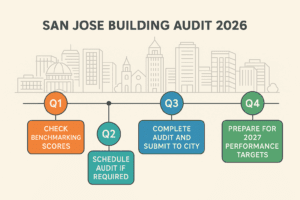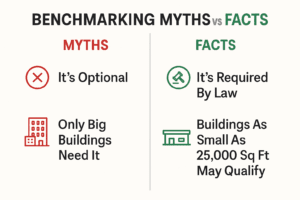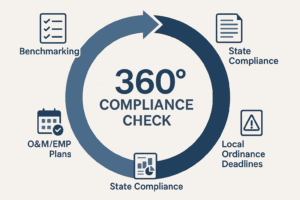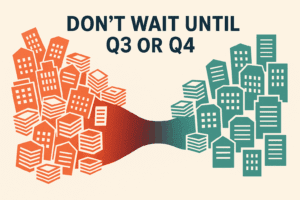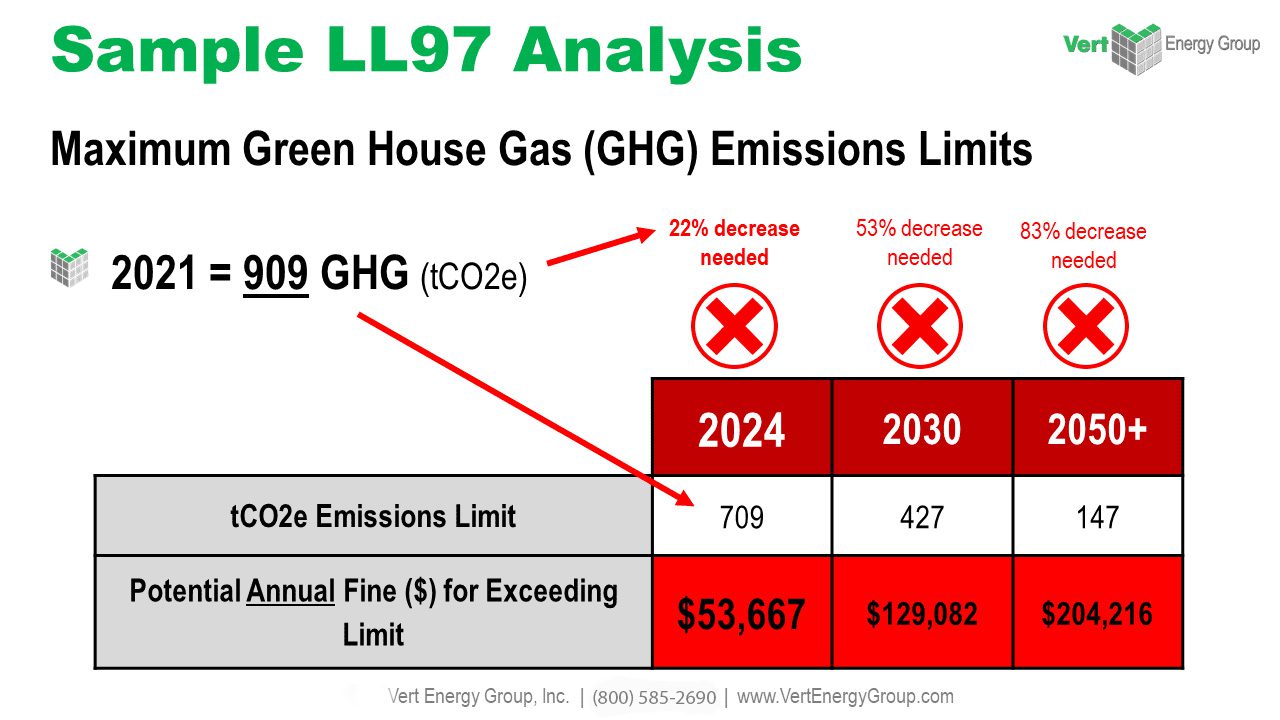I. Introduction
In the construction sector’s bustling arenas, where colossal machines and soaring skyscrapers are the order of the day, an unassuming adversary looms large – paperwork. This relentless flow of forms and files encapsulates contracts, compliance documents, change orders, and more, standing as silent sentinels to an age-old system that now seems archaic in the light of modern efficiency standards. But what if the construction world could be liberated from the clutches of this paper-bound legacy, stepping boldly into a new digital dawn? That’s exactly where mobile construction management software enters the picture—a beacon of innovation designed to cut through the red tape and propel the industry forward.
II. Understanding the Problems with Paperwork in Construction

Managing a construction project is a complex dance of logistical, managerial, and operational tasks. At the heart of this challenging coordination is the relentless stream of paperwork, a necessary yet burdensome element of the process. Let’s break down the problems that paperwork introduces to the construction field:
Time-Consuming Nature of Paperwork
The manual handling of paperwork is a notorious time-sink. A study by AutoDesk found that construction professionals spend, on average, about 14 hours per week on administrative tasks. This includes the time to fill out documents, organize files, or search for information in a disorganized paper trail, which can lead to significant inefficiencies.
Risk of Errors and Loss of Data
Paper-based systems are inherently vulnerable to human error. Information can be incorrectly entered, misread, or omitted entirely. Add to this the ever-present risk of physical documents being lost, damaged, or destroyed, and it’s clear why this method is far from foolproof. When such errors occur, they can cascade through a project, causing delays and financial losses.
Impact on Productivity and Efficiency
The result of all the time, money, and effort spent managing paperwork is a big hit to productivity and efficiency. Workers mired in administrative tasks are workers diverted from the actual construction work. Every hour they spend handling documents is an hour they’re not spending on planning, building, or inspecting. This misallocation of human resources is a considerable drag on project timelines and budgets.
Environmental Implications
The construction industry’s reliance on paper has broader implications beyond just operational inefficiency. The environmental impact is substantial, with the industry contributing to the depletion of forest resources, increased energy use, and waste generation. The paper production process also involves the emission of greenhouse gases and other pollutants, making it a sustainability concern.
Understanding these layered problems underscores the urgency for a shift. It’s not just about staying competitively viable; it’s about environmental responsibility and operational excellence.
III. What is Mobile Construction Management Software?
As the name suggests, mobile construction management software is a class of applications and tools designed for the unique operational needs of the construction industry. This software streamlines tasks such as project scheduling, document management, budgeting, and communication, all accessible from mobile devices like smartphones and tablets.
The Evolution of Digital Solutions in Construction
The construction industry has historically been slow to adopt new technologies. However, as digital solutions become more robust and user-friendly, a growing number of construction companies are recognizing the benefits of going digital. This transition supports not just management and administrative functions but also on-site operations, bringing a new level of connectivity and synchronization to construction projects.
Mobile construction management software is part of this larger trend of digital transformation, which is reshaping the construction industry to be more agile, transparent, and efficient. By adopting these technologies, companies can stay ahead of the curve and capitalize on the competitive advantage they offer.
IV. The Advantages of Switching to Mobile Construction Management Software
When construction companies adopt mobile construction management software, the benefits are immediate and impactful. Here’s a closer look at the advantages:
Increased Efficiency and Time-Saving
The streamlined processes made possible by mobile construction management software save significant time. Instead of manually filling out forms and waiting for approvals, team members can submit documents electronically and receive instant notifications. This accelerates the decision-making process and reduces the time projects remain idle due to administrative bottlenecks.
Improved Accuracy and Reduced Risk of Data Loss
With digital records, the accuracy of data is vastly improved. Mobile construction management software often includes features like auto-fill and data validation, which minimize the risk of human error. Moreover, cloud-based storage ensures that even in the event of physical hardware issues, data remains secure and recoverable.
Enhanced Collaboration and Communication
The collaborative features of mobile construction management software enable project teams to work together more effectively. Real-time chat, document sharing, and update notifications keep everyone informed, fostering a collaborative environment that spans across different locations and even time zones.
Real-time Data Access and Easy Updates
Remote access to project data ensures that team members can retrieve and update information from anywhere, at any time. This immediate access to data is crucial for making timely decisions, managing project changes, and maintaining a clear and current overview of the project’s progress.
Positive Environmental Impact
The adoption of a paperless system through mobile construction management software significantly reduces paper consumption, which is good for the environment. Digital documentation means fewer trees are cut down for paper production, less energy is consumed, and waste is minimized, contributing to a cleaner and more sustainable planet.
In summary, the advantages of switching to mobile construction management software are not just beneficial—they are transformative. They represent a step-change in how construction projects are managed, with positive knock-on effects for productivity, accuracy, collaboration, and environmental stewardship.
V. Key Features to Look for in Mobile Construction Management Software
When evaluating mobile construction management software options, look for the following key features that are essential for a smooth operation:
User-friendly Interface
Workers in the field need an interface that is clear and easy to navigate. The design should be intuitive so that team members do not need to waste time learning complicated processes or searching for the tools they need.
Robust Security Features
Construction projects often involve sensitive data, including financial information, proprietary designs, and personal details. Ensuring this data is secure against unauthorized access, breaches, or other cyber threats is critical. This means looking for software with strong encryption, multi-factor authentication, and regular security updates.
Integration Capabilities with Other Software
The ability to integrate with other software systems, such as accounting, HR, or ERP systems, allows for a seamless flow of data across different departments. This connectivity eliminates the need for redundant data entry and ensures that all parts of the business are working from the same information.
Availability of Analytics and Reporting Tools
Data collection is only as valuable as the insights that can be drawn from it. Robust analytics and reporting tools help managers understand project performance, identify trends, and make informed decisions based on real-time data.
Reliable Customer Support
When implementing new software, you want the assurance that any questions or issues will be addressed promptly. Look for providers with a reputation for excellent customer support, including comprehensive training resources, a knowledgeable help desk, and responsive technical assistance.
Choosing a mobile construction management software with these features will position your company for success, ensuring you have the tools you need to run your operation smoothly and efficiently.
VI. Case Studies of Successful Switch to Mobile Construction Management Software

The theory behind the benefits of mobile construction management software is compelling, but real-world examples add substantial weight to the argument. Numerous case studies illustrate the positive impact of the transition from paper to digital.
Case Study 1: Improved Operational Efficiency
One notable case involves a mid-sized construction company that switched to a mobile construction management platform and saw a 20% increase in operational efficiency. This uptick was attributed to the reduction in time spent on paperwork, the quicker resolution of issues, and the improved allocation of resources.
Case Study 2: Enhanced On-site Collaboration
Another example is a large construction firm that implemented mobile software and reported a 30% improvement in on-site collaboration. The ability for team members to communicate in real-time and share documents instantly led to fewer misunderstandings and delays.
Case Study 3: Environmental and Cost Savings
A third case study highlights a construction enterprise that achieved significant environmental and cost savings by going paperless. By eliminating paper plans and documents, the company saved over 50,000 sheets of paper over a year, translating to a reduced environmental footprint and financial savings.
These practical applications of mobile construction management software underscore its value and showcase why many in the industry are making the switch.
VII. How to Implement Mobile Construction Management Software
Adopting a new technology can be daunting, but with a strategic approach, the transition can be smooth and rewarding. Here’s a step-by-step guide to implementing mobile construction management software:
1. Assess Your Needs: Begin by understanding your specific needs. What problems are you trying to solve? What features are most important to your team?
2. Research and Select a Provider: With your needs in mind, research and select a software provider. Look for companies with strong customer reviews, robust security protocols, and a track record of reliability.
3. Plan the Rollout: Develop a detailed plan for the rollout of the new system. Decide whether to implement it in phases or all at once, and ensure you have a clear timeline for each stage.
4. Train Your Staff: Invest in training for your team to ensure everyone is comfortable and confident using the new software. This is crucial for adoption and should not be overlooked.
5. Provide Support: As your team transitions to the new system, provide ample support. This may include having IT staff on hand to answer questions or providing additional resources to help with the learning curve.
6. Gather Feedback: After implementation, collect feedback from users to see what’s working and what’s not. Use this feedback to make necessary adjustments to improve the experience and effectiveness of the software.
By following these steps, you can ensure a successful transition from a paper-based system to a modern, mobile construction management solution.
VIII. Conclusion
The wind of change is blowing through the construction industry, carrying the promise of increased efficiency, improved collaboration, and a reduced environmental footprint. By embracing mobile construction management software, construction companies can not only improve their bottom line but also contribute to a more sustainable future. The age of digital construction management is here, and it’s time to join the revolution.
VertPro.com is the go-to hub for contractors dedicated to elevating energy performance upgrades for their clients. Our expansive suite of offerings includes expert Commercial Energy Audits, adept Benchmark Compliance consultation, and expansive Construction Marketplace. At VertPro®, we pride ourselves on delivering cutting-edge SaaS technology solutions that simplify the journey through Energy Benchmarking, and Energy Audits/RCx Plus, all while maintaining full compliance with a myriad of more than 60 Energy Benchmarking and Energy Efficiency Regulations nationwide.
At VertPro.com, we don’t just provide the insights and tools for energy management; we also bridge connections between qualified contractors and our client base, eager to upgrade their buildings. This creates a Marketplace where you can expand your project portfolio, ensuring that you’ll have more opportunities to apply your skills and grow your business.
